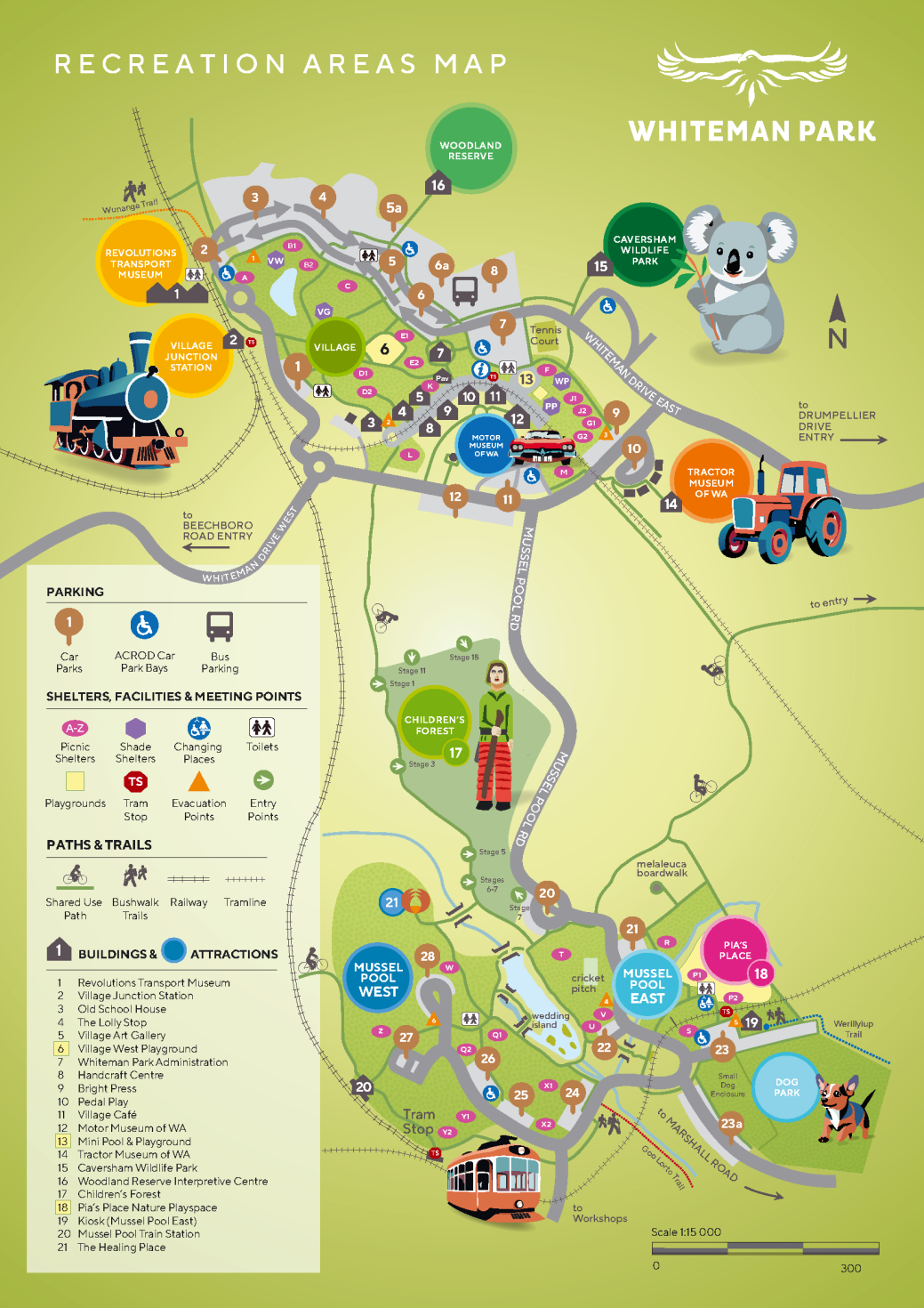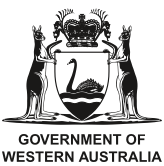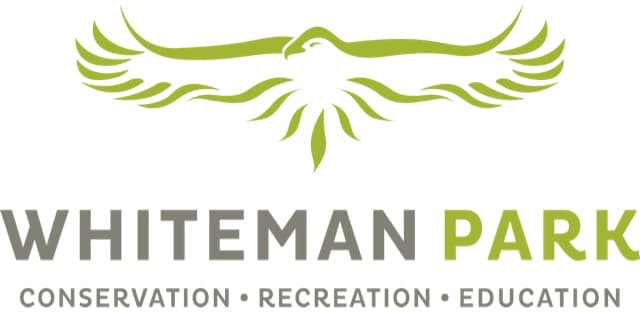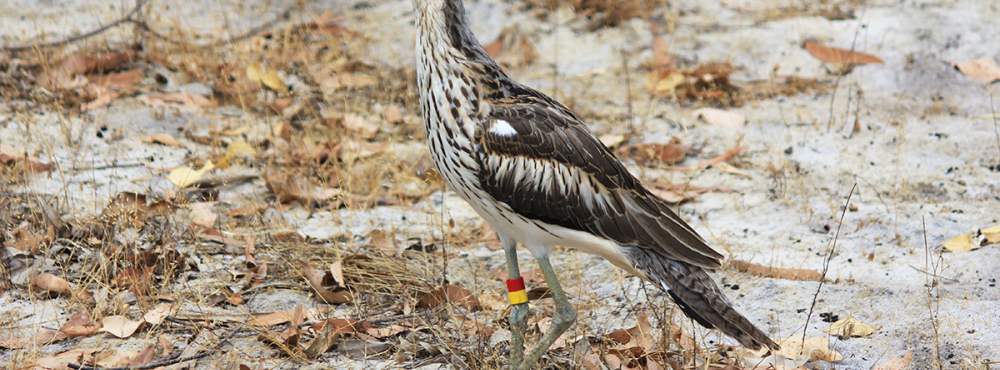Bush stone-curlew
Burhinus grallarius
The bush-stone curlew was successfully reintroduced into the Park in August 2013, in a joint project with Perth Zoo and Caversham Wildlife Park.
Despite being nocturnal, they can often be seen in the Village area, with the birds nesting on open ground on the hill behind the Motor Museum, near the Tractor Museum and in the Link Road paddocks.
Characterised by their long, chopstick-like legs, the tall stone-coloured curlews have often been likened to the North American roadrunner due to their fast and agile movement through grassland habitats, and for their penchant to suddenly freeze and camouflage themselves into obscurity.
If you’re in the Park late in the afternoon or close to dusk in winter, you won’t mistake their distinctively eerie wailing call! The peculiar hoarse-hissing “weer-loo” scream that they emit accounts for their Noongar name, weerlo.
Curlews were more common along the Swan Coastal Plain in our grand-parents and great-grand parents’ time, but their numbers have dwindled to a critical stage due to urbanisation and the impact of feral predators. The last known sustainable population of curlews was in Rockingham in 1932.
Now, thanks to the successful translocation of birds from the Perth Zoo and Caversham Wildlife Park breeding programs, the bush stone-curlew is well-established in the Park.
FAUNA PROFILE
| Family | Burhinidae |
| Scientific name | Burhinus grallarius |
| Noongar name | weerlo |
| Common name | bush-stone curlew, bush thick-knee, weerlo |
| Conservation status | Least Concern |
| Habitat | grasslands, heathlands, woodlands |
| Park occurrence | Resident |



